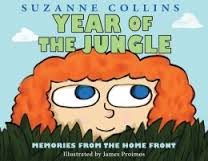 Collins bases this story on her own experiences as a child.
Collins bases this story on her own experiences as a child.
Set during the summer of 68/69, Suzy’s father is sent to Viet Nam. She is told he will be gone for one year. But these statements, while simple to an adult, are very difficult for a young child to comprehend. What does her Dad’s going away mean exactly? What and where is Viet Nam? Why does he have to go there? How long is a year?
As the story unfolds we follow Suzy to the start of first grade and throughout the year. We follow along too, with postcards that Dad sends to Suzy. Holidays come and go as Suzy wonders how much longer Dad will be gone. Confusion sets in and worry mounts as the postcards become few and fewer, to the point that months pass without word from Dad. Will her father come back at all?
Collins examines the feelings that young children go through when a parent deploys. The happy ending helps alleviate tension that does build when reading this book. The cartoon like images also help soften the edge on an otherwise difficult situation and topic.
This would be a good book to facilitate discussion for military children during large, extended deployments; although, I would tend to choose select portions of it to foster discussion. I wouldn’t want to needlessly build any extra fears in young ones’ thoughts. That being said, reading after deployment, and a safe return, would be a good use of this story as well.
Written for grades K – 3, I feel this book would work well for grades 2 – 4.


